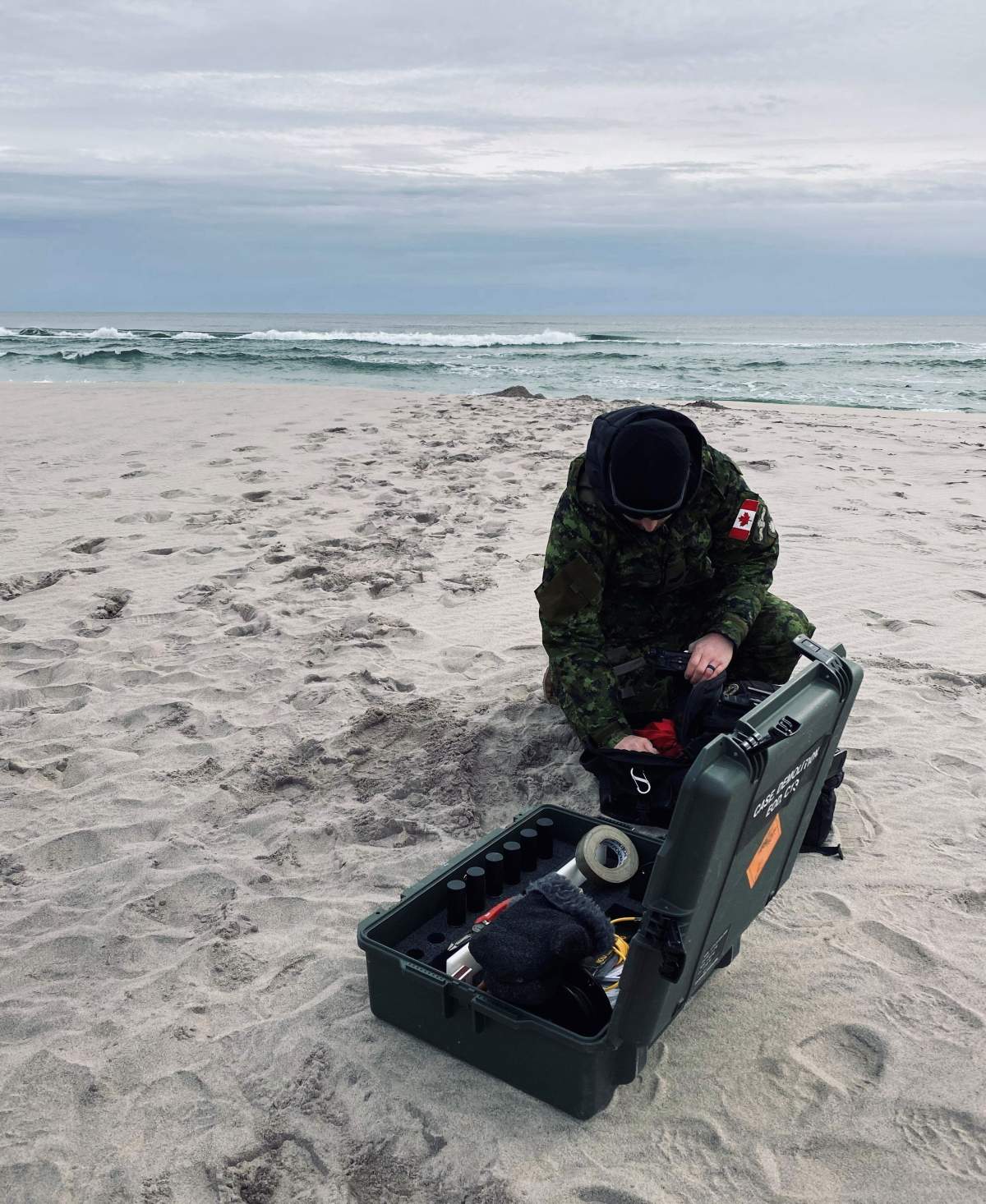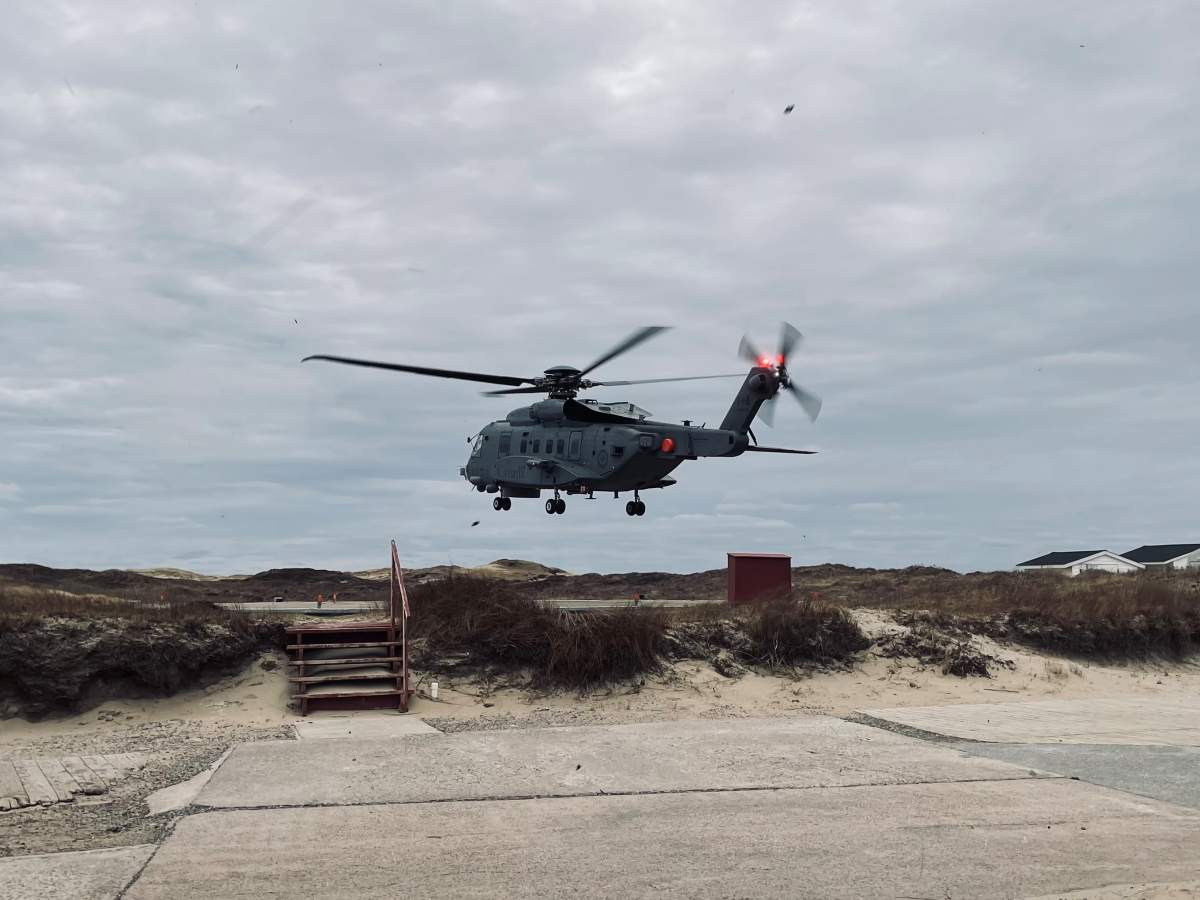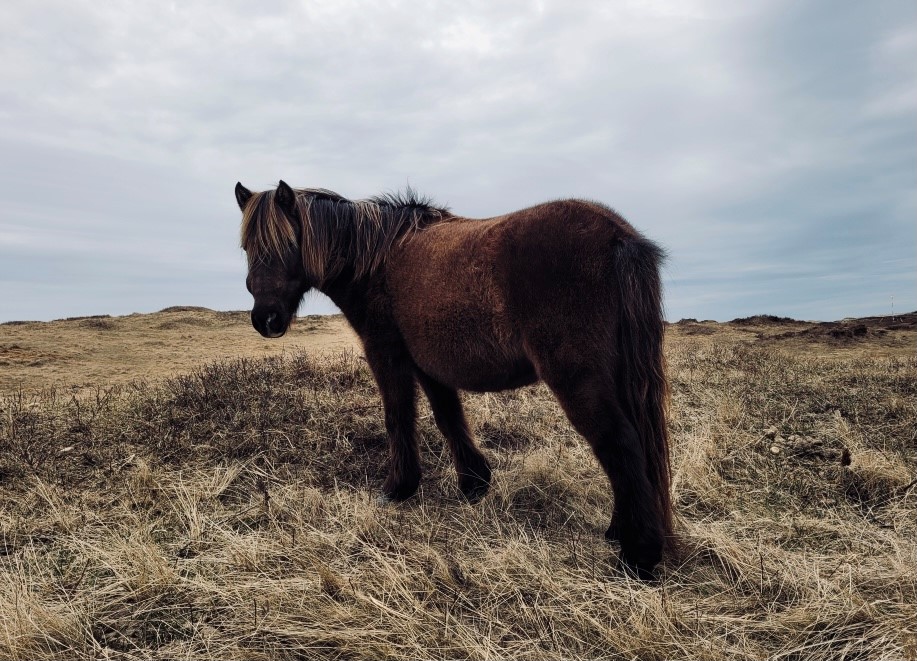A thin strip of land off the coast of Nova Scotia that is home to a group 300 species of rare wildlife and not much else played host to a group of Canadian Navy divers earlier this month.

On Feb. 19, members of the Canadian Armed Forces were dispatched on a special mission to Sable Island, the national park located approximately 290 km east of Nova Scotia.
They were there to safely dispose of unexploded ordnance that had washed ashore on the island.
A Parks Canada employee was the first person to report the ordnance — confirmed to be five boxes of 9mm ammunition and some markers commonly used by vessels to mark locations — at the end of November.
L-Cdr Brian Owens, a spokesperson for the Canadian Armed Forces’ Joint Task Force Atlantic, told Global News on Wednesday that they’ve been planning the mission since the ordnance was brought to their attention.

Get breaking National news
“Getting to Sable Island is not an easy task,” he said.
The Sable Island National Park Reserve is only accessible by sea or by air and Owens said they were only able to schedule the flight last week and actually be able to carry out the mission on Feb. 19 as a result of the weather.
The three-person disposal team was transported to the island by a CH-148 Cyclone helicopter from 12-Wing Shearwater.
The marine location markers disposed of last week are commonly known as smoke markers.
Although they are very few risks associated with the markers once they are used, the Canadian army is still responsible for disposing of them.
Owens said the 9mm rounds found on the island are used by the Canadian Armed Forces quite frequently but they’re still looking into why the ammunition washed ashore on Sable Island.
The disposal team was unsure how long the rounds had spent in the salty ocean water or on the beach.
“It presents a, you know, unstable nature,” Owens said.
“So we (blow it up) in place to make sure that they’re properly disposed of.”
Disposing of the ammunition was a routine operation for the team, considered to be the “supreme divers in the Canadian forces,” according to Owens.
However, the setting of Sable Island was a unique environment for the team.
They were given a short tour of the island by Parks Canada staff and even had a chance encounter with one of Sable Island’s fabled wild horses.
The horses have roamed the strip of land since the 18th century and are part of the untamed image of the location.
“How many people in Canada actually get out to the island to see, and the chance encounter that they had with one of the ponies and the sea life is pretty amazing,” Owens said.
- Officials stress Calgarians must save water after Bearspaw main break sees no drop in usage
- Yukon-Alaska border rocked by 3 earthquakes in final hours of 2025
- Snowmobiler dies in avalanche in Rocky Mountains in northeastern B.C.
- Canadians ring in 2026 with ‘invigorating’ polar plunges across the country











Comments